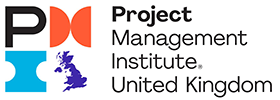To understand where it all begins, it is important to explain what is and define the Scope of a project. I will do so by quoting one of my own sources, a published article titled: “Chapter 2: Thinking about sustainability in the delivery of high-quality projects.”:
“Defining the scope
Project Management Institute (PMI) defines projects as a “temporary endeavour undertaken to create a unique product, service, or result.” Furthermore, they describe project management as the “application of knowledge, skills, tools, and techniques to complete a series of tasks, ultimately delivering value and achieving desired outcomes.” These definitions highlight the dynamic nature of projects and the multifaceted approach required to successfully manage them.
Even though a project is just a temporary endeavour, it can still be sustainable! But what does that mean?
APM: Association for Project Management describes Sustainability in Project Management as “an approach to business that balances the environmental, social, economic aspects of project-based working to meet the current needs of stakeholders without compromising or overburdening future generations.”
GPM® Global goes a little deeper, they have given it the name of Green Project Management® or Sustainable Project Management and gives the following meaning: “the application of methods, tools, and techniques to achieve a stated objective while considering the project outcome’s entire lifecycle to ensure a net positive environmental, social, and economic impact.”
On the other hand, according to the P5 Standard for Sustainable Project Management, Green Projects fall under a unique “Sustainability Management Plan”:
A Sustainability Management Plan (SMP) describes how sustainability will be addressed during a project. P5 has an integral role in developing an SMP as P5 identifies the subjects to be addressed. An SMP should generally include:
- Purpose
- Approach
- Roles and responsibilities
- Budget
- Key Performance Indicators for Sustainability
- Impact of Scope Exclusions on Sustainability
- Reviews and reporting
- P5 Impact Analysis
GPM created a template that can be used to gain control of this phase in your Green Project success, the template is called “Sustainability Management Plan” and if you type the same exact sentence on a search engine, you will be able to find it for free download.
The Big Conundrum
The question to ask here is simple: how do we ensure a project’s lifecycle is conscious enough of its carbon footprint as well as energy both electric and human consumption? Surely it doesn’t depend solely upon us, as a project is made of multiple layers and depends on a variety of people and materials.
How can you make sure to tick all the boxes and travel down the road less traveled? In other words, how can you go the extra mile in favour of our planet? – one thing is for sure, it isn’t without extra time, effort and at times, money.
The Road Most Travelled
Let’s start with the processes easiest, quickest and for the most part, cheaper to implement. I like to call these the “low-hanging fruits of sustainability”, mostly in the workplace. The list starts with the environment where you, project/product manager, conduct your project – the office or your home base office:
- Replacing your home or office regular bulb lights with LED lights.
- Going 100% paperless.
- Eliminating redundant tasks to lower the time needed in front of the computer, to save energy both human and electric.
- Downsize server and data-centre base as well as lower energy consumption.
- Turn off lights when out of office.
- Have staff meals be cooked in-house to eliminate the delivery.
- Drop the orders that of stationary and other items that need to travel internationally.
- Source locally.
- Enforce a cycle to work culture.
- When possible, allow employees to work from home to eliminate the transportation to the office.
Just to name a few, above you can clearly see already so many actions that can be taken by anyone with initiative. These are easily implemented and can cause a great deal of change. All you need is some organisational skills, resource allocation and delegation plus a bit of resource allocation – skills that every project manager must and should have in order to be successful.
The Extra Mile Club
If we were to summarise project management as an easy closed shut triangle, it would be called Triple Constraints. Each side of this triangle would constitute the three core focuses of a project: Time, Cost, Scope and Quality (added to the centre of the triangle. Quality is the main focus of projects, it sets the benchmark as the client’s seal of approval, the quality expectations from planning to closing phase.
That’s not all, what we see there is an important evolution from the Tripe Constraints to Six Constraints adding Risk, Benefits and Value. Now, the extra mile and road less travelled happens after that, when the evolution takes us to the addition of Environmental, Social, Economic and Purpose.
The Four Elements
When delivering sustainable projects, one must go beyond the traditional scope of work and broaden that definition line to incorporate the notion of: what will it take to bring a Sustainable Project or Green Project to life? What are the extra necessary steps?
SOCIAL IMPACT
Have we thought about the impact a project has on the social aspect? Is it beneficial to the wider community? And how can you measure it?
One way of measuring the social impact is by delivering a questionnaire to individuals in the community. With that it’s important to also consider the ethical impact of projects. According to “The Ethical Considerations” by the Museum Change Lives:
“People who have encountered systems of care during their life may understandably have a negative response to data capture” says Jess Turtle of the Museum of Homelessness.
When throwing ethical and employability into the mix, again by the Museum Change Lives found that:
“Our team,
informed by lived experience of homelessness, has set outcomes such as
an increased sense of social connection or a sense of common purpose. We
don’t believe that employability is the only way an individual can be
of value to society and reflecting that in our outcomes sends an
important message” says Jess.
As clearly stated above, asking individuals of diverse backgrounds and demographics within the community, opens up a world of knowledge about how the community is affected by what’s happening around them.
ECONOMIC
What is the economic impact it can have? In simple word, it’ll determine the impact a project or policy has, both positive or negative, towards a specific community or population. This becomes necessary when there are major policy changes, for example, or the construction of a new residential development, new taxation policy or implementation of other major changes in the community.
The FC’s Economic Impact Estimation Framework was developed to measure the impact created by their long-term projects in relation to value add and number of jobs created.
According to them:
“The IFC Economic Impact Estimation Framework considers three layers of economic effects:
- Direct effects, such as jobs created by an IFC client company as a result of a project.
- Indirect effects, which can occur downstream and/or upstream from the investment project or client company. An example would be jobs created along a client’s supply chain, or as a result of a downstream industry’s growth.
- Induced effects, which are caused by an increase in domestic consumption resulting from an increase in direct and indirect employment and income. Induced impacts include newly created jobs that cater to the increased consumption in the economy.”
The most common methodologies for assessing economic impact are:
- Input-Output analysis (I-O)
- Input-Output Econometric Modelling (IOE)
- Computable General Equilibrium Modelling (GCE)
The focus methodology in question (for the purpose of this topic specifically) will be Input-Output (I-O).
ENVIRONMENTAL
When taking the environment into account, you must take into consideration all the resources used to deliver the product/project. It goes deeper than simply understanding and calculating the amount of carbon emissions your resources are guilty of emitting.
First and foremost, you would need to let your ethic professional self guide you in the right direction here. After conducting thorough research and assess the entire lifecycle of your resources, your moral compass will determine whether that one chosen manufacturer has in their procedures the practice of conducting a rigid sustainable step-by-step application when making/building their resources. Or has that farmer taken complete care and has a proof of processes followed from plantation phase to selling products that clearly shows a sustainable path?
It is almost unfair to place this responsibility on your project management shoulders, however, you have the power to be the deciding factor when lowering the total amount of greenhouse emissions, human labour, and electric usage during the project’s lifecycle by making these important decisions. When this process becomes the norm, those businesses that do not comply, will be left out of the market unless they finally comply to a sustainable practice.
PURPOSE
A project’s purpose is the main reason for the project’s existence. You should ask the question: Why is this project being undertaken? Is this project necessary? Will it add value and create positive impact altogether? It goes back to the project scope.
The project scope should be as well defined as humanly possible.it embodies all the features and deliverables of a project, it ensures the safety from Scope Creep which consequently, keeps it from any unwanted surprises. How can you ensure this is completed? Always have a Scope Statement well-defined and ready as part of the planning process. This should be approved by all directly involved stakeholders, most importantly the project/product owner.
Conclusion
To recap, Sustainable Project Management involves a few extra steps to ensure value add and an ethical result when delivering projects. When project managers decide to go that extra mile and travel the road less travel, they should be conscious of the responsibility and ready to make difficult decisions that could sometimes go against a stakeholder that is close to the project. In instances like this, their stakeholder management experience and emotional intelligence will play a huge part.
For peace of mind, make sure that your Green Project will indeed deliver value and provide positive outcomes for the Project/Product Owner and can answer all 4 extra constraints for value creation.
About the Author

Tiago Lourenco – a dedicated volunteer with the PMI UK Chapter’s Tech & Digital Studio and a recent addition to the Mentoring Team. His profound passion for project management has given the drive to complete a remarkable career transition, in style, lasting nearly a year. Demonstrating exceptional commitment and expertise, Tiago successfully established his own project management firm ‘Structured PM’. Committed to personal growth and community contribution, he has become a published author, writing knowledgeable articles focused on adding value. Most recently, Tiago launched a career coaching service, aiming to share his knowledge and experience with others, grounded in strong discipline and dedication.


